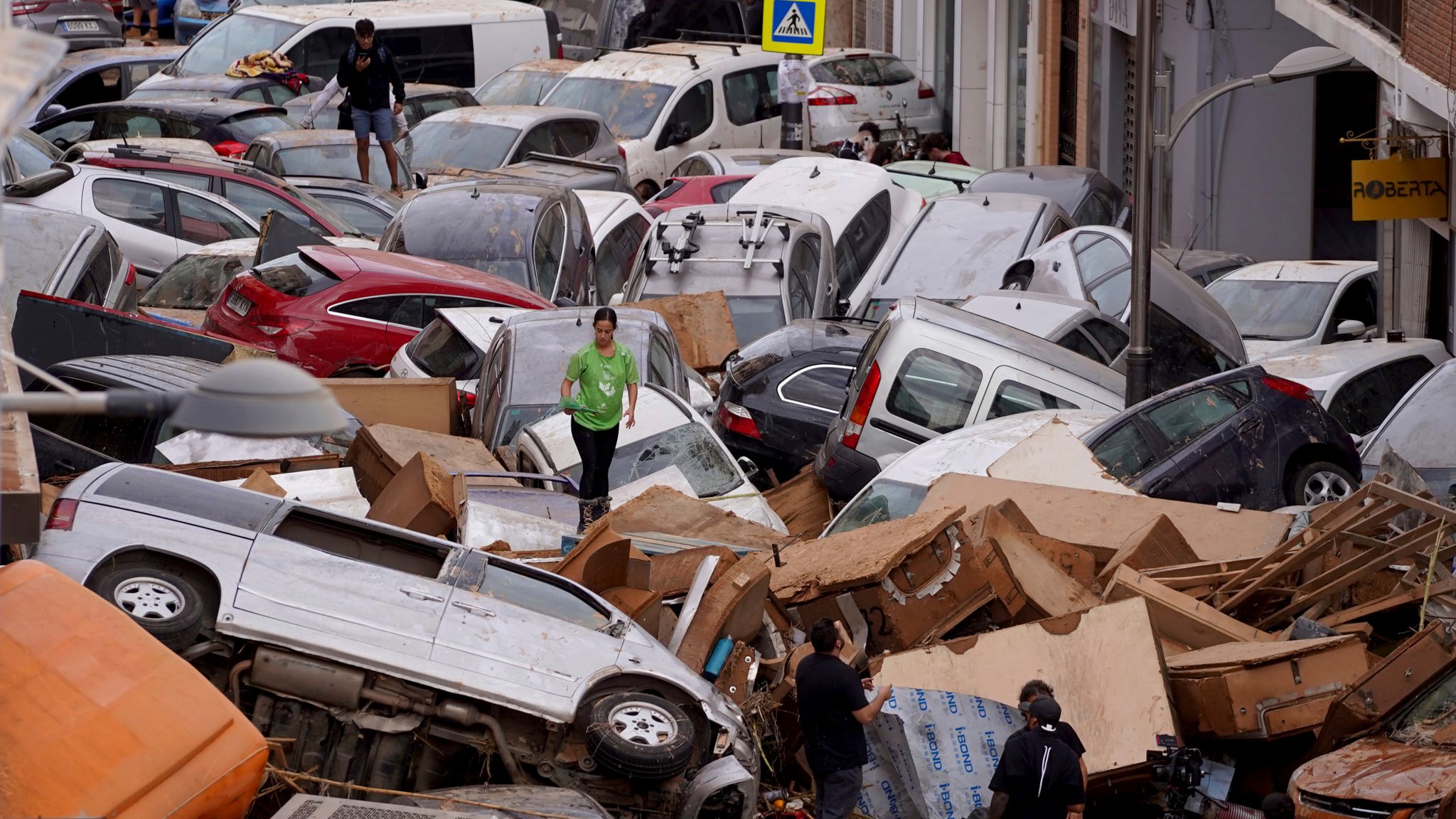For days now, Spain has been enduring the worst flash floods in many years. Torrential rains have caused tremendous floods in many towns and cities, particularly in the countryside, where this natural disaster is expected to rampage areas without infrastructures. Aside from disrupting daily life, the flash flood has already destroyed everything - from roads to houses and farmlands. This article discusses the causes of such flash floods, the immediate and long-term impacts, and the growing concern regarding whether or not climate change plays a role in exacerbating extreme weather events in Spain and across the international world.
Heavy Unusual Rainfall and Flash Flooding
The heavy bursts of rainfall over a short period resulted in rivers and drainage systems bursting due to such an extraordinary amount of rainfall. Spain is accustomed to seasonal rainfalls. However, this year's was much stronger than usual. In some parts, it reached more than 100 millimetres within less than 24 hours, several times higher than the level for this time of year. With this sudden increase in water volume, riverbanks were overwhelmed, and rivers burst with water flowing into low-lying places at an incredible speed.
They recommend that these extreme rain events appear to be more frequent, thus perhaps indicating a change in climate. Higher European temperatures lead to higher evaporation and total atmosphere moisture levels, increasing rain intensity. With Spain breaking temperature records and experiencing heatwaves, the threat of heat and the subsequent heavy rains is something to watch out for in the future.
Regions Affected and Emergency Response
Many towns in eastern and southern Spain suffered severe overflows and flooding. Among the worst-hit towns was Alcanar in Catalonia, where images and videos emerged showing floating cars in swollen rivers. Many roads became submerged under water, cutting off access to some areas and leaving people stranded in rural areas. Farmland was destroyed, livestock was lost, and huge economic costs were imposed on local farmers and businesses engaged in agriculture.
The Spanish Government quickly deployed emergency services with rescue teams bringing relief to communities affected by the landslide. Around-the-clock evacuation efforts involved civil defence and firefights in evacuating many residents from the high-danger zones. People marooned in areas were evacuated by helicopters, and shelters for families displaced were erected. While swift action did prevent any further loss of life, this tragedy still comes at a huge human cost, psychological as well as economic toll.
Economic Impact on Infrastructure and Agriculture
The flash floods will be very costly because most of the destruction lies on infrastructures, houses, and farmlands. Several roads, bridges, and buildings in different towns have been structurally damaged. Most of them might take months to repair. At the same time, local governments are busy assessing the extent of the damage and estimating how much it would cost to repair, which will largely burden municipal budgets already stretched because of the economic impact of COVID-19 and ongoing inflationary concerns.
Flash floods have been particularly devastating to the agricultural sector. Spain is among the largest fruit and vegetable producers in Europe, and floodwaters have destroyed much of the crops in the affected areas. Vineyards, orchards, and vegetable farms in Murcia and Andalusia have been submerged, resulting in a shortage of crops and an increased price for consumers. Livestock are also being lost, affecting meat production and dairy supplies for the months ahead.
Climate Change Connection
While flash flooding isn't new in Spain, repeated occurrences and extreme events have sent alarm bells ringing among climate scientists and environmental experts. Global warming increases the severity and vagrancy of weather patterns, and southern Europe still stands at the highest risk posed by climate change. The Mediterranean Sea warming up increases the likelihood of flash flooding due to heavy precipitation that may rapidly come to coastal or lower areas.
Spain has already been experiencing a succession of challenges attributed to climate change. Regional states in the country have experienced prolonged heat waves and droughts, which parch the ground, removing moisture from the soil and creating a crust that prevents rainwater from penetrating the subsoil whenever there is rainfall, hence speedy runoff. At least, the Spanish government and the European Union have begun to realize that there is a need for adaptation measures in actions on climate change, such as better infrastructure in handling water and early warning systems for better preparedness for these events.
Going forward: preparedness and resilience
This impacts the local and national authorities since they direct their energy towards improving flood control and preparedness. Better drainage of cities and better land-use planning in areas prone to flooding could reduce risks in the future. In addition, reforestation and riverbank restoration are seen as able to slow running water and also provide a natural barrier against the impact of floods.
Spanish adaptation strategies for climates are also being managed in partnership with the EU since the country expects more frequent extreme climatic events. This will include investing in early warning, educating communities to prepare better for emergencies, and developing sustainable farming practices resilient to more erratic weather variations. Additionally, a climate-resilient infrastructure such as flood-resistant buildings and roads is sure to be part of adapting to a warmer, more unpredictable climate.
Conclusion
The recent flash floods in Spain starkly remind the world of the growing battle that global warming presents. Actually, on the scale and impact, though Spain has made great strides in climate adaptation, the scale of these floods underscored how much greater the resilience needed to be. The floods have devastated communities and economies, highlighting the urgent need for global action on climate change. Because Spain is slowly recovering and rebuilding, it must prepare itself for future situations where extreme weather events often become more of a norm. Sustainable infrastructure and climate adaptability form a bedrock foundation with which it can work to recover towards a more resilient future for its people and its economy.



0 Comments